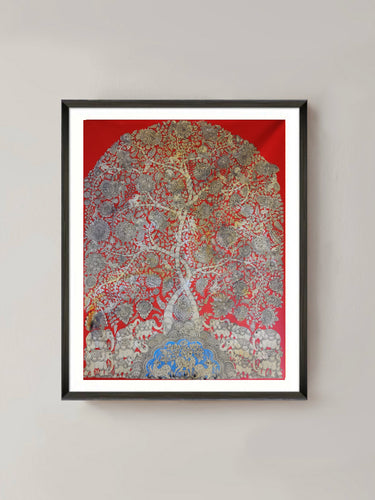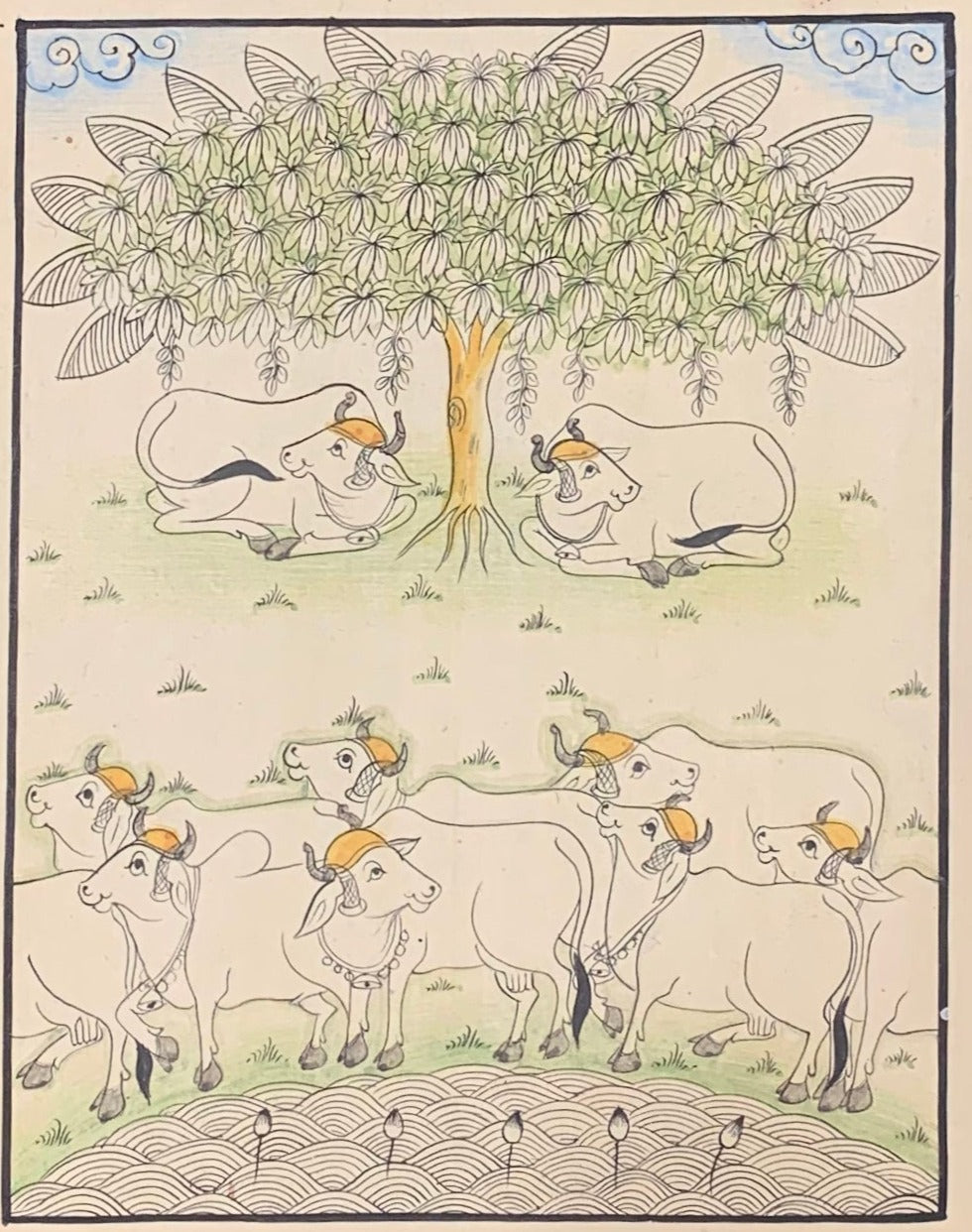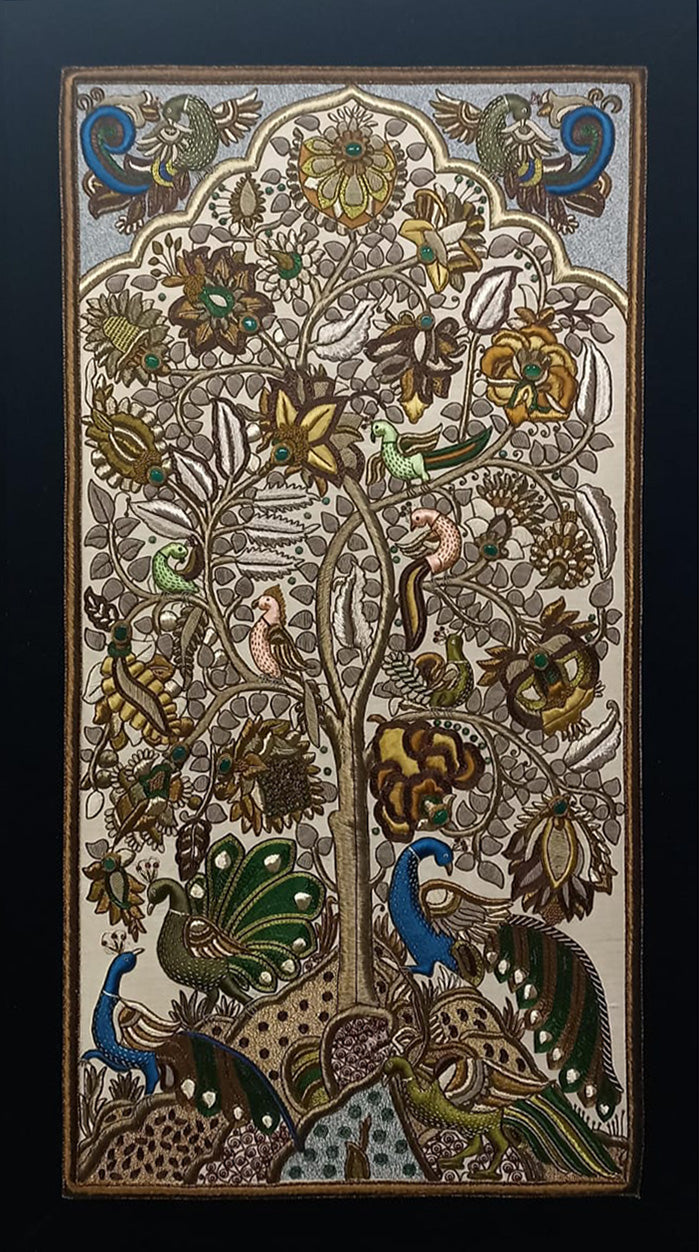"Tree of Life" is a powerful and enduring motif that appears in various traditional art forms across cultures. Artists across cultures and periods have explored and depicted this motif in various ways, each interpretation enriching our understanding of life's profound mysteries and connections. However, the basic concept and symbolism behind this motif revolve around life, interconnectedness, growth, and vitality.
The roots of the tree symbolize grounding and stability, while its branches reaching toward the sky signify growth. In many cultures, the Tree of Life represents a bridge between the earthly and spiritual realms. Its expansive branches symbolize reaching towards the divine or cosmic forces, while its roots anchor it firmly in the earthly plane. This duality reflects a holistic view of existence. However, this collection showcases how different traditions have interpreted and embodied this symbol through their unique artistic expressions.
Understanding the Tree of Life Meaning
The tree of life meaning is deeply rooted in spirituality and nature. It signifies the interconnectedness of all living things, representing growth, strength, and the cycle of life. In a spiritual meaning of the tree of life, it often serves as a symbol of immortality and connection to the divine. The tree of life bible references also tie this motif to themes of creation and sustenance.
Tree of Life Paintings and Vastu
For those interested in tree of life painting vastu, these artworks are considered auspicious for the home. They are believed to bring harmony, positive energy, and balance to the living space, promoting well-being and prosperity.
Explore Indian Interpretations:
Madhubani Tree of Life Painting
Madhubani, a traditional art form from Bihar, India, is known for its intricate patterns and vibrant colors. The Tree of Life in Madhubani art is often depicted with dense foliage, birds, and animals, symbolizing the connection between all living beings. This style uses natural dyes and pigments, with the tree often serving as a focal point in the depiction of mythological and folkloric themes.
Kalamkari Tree of Life Painting
Kalamkari, originating from Andhra Pradesh and Telangana, involves hand-painting or block-printing on fabric. The Tree of Life in Kalamkari art is characterized by its elaborate and detailed designs. Using earthy colors derived from natural sources, these paintings often include floral motifs, animals, and intricate patterns, reflecting the harmony and diversity of nature.
Warli Tree of Life Painting
The Warli art form, practiced by the Warli tribe of Maharashtra, uses simple geometric shapes to create meaningful depictions of life and nature. The Tree of Life in Warli painting is often central to village life scenes, showcasing the symbiotic relationship between humans and nature. The monochromatic palette, typically white on a red or ochre background, emphasizes the simplicity and profundity of this connection.
Gond Tree of Life Artwork
Gond art, originating from the Gond tribal community of central India, is known for its vibrant colors and detailed dot and line work. The Tree of Life in Gond paintings is depicted with a riot of colors and intricate patterns, representing the vibrant ecosystem and the belief that all living beings are interconnected. This art form often tells stories of nature, mythology, and daily life.
Phad Tree of Life Painting
Phad painting, a traditional scroll painting style from Rajasthan, is used to depict epic narratives of deities and heroes. The Tree of Life in Phad art is often intertwined with these stories, serving as a backdrop that signifies life, growth, and prosperity. The bold lines and bright colors used in Phad paintings make the Tree of Life a striking and integral element of the composition.
Rogan Tree of Life Artwork
Rogan art, a unique textile painting technique from Gujarat, involves creating intricate designs using a castor oil-based paste. The Tree of Life in Rogan art is rendered with exquisite detail and symmetry, often featuring floral and geometric patterns. The skillful application of vibrant colors on dark fabric backgrounds makes these artworks visually stunning and rich in cultural significance.
Tree of Life Wall Decor and Abstract Art
Explore our diverse collection of tree of life wall decor and tree of life wall art. Find tree of life abstract art that offers a contemporary take on this timeless motif. While we celebrate traditional Indian art, we also recognize the universal appeal of the Tree of Life, as seen in the works of artists like Gustav Klimt tree of life.
Each art form, from Pattachitra to Warli, brings its own unique interpretation, reflecting the diverse cultural landscapes of India. This collection celebrates the rich tapestry of Indian art and the enduring significance of the Tree of Life motif, offering a window into the spiritual and artistic heritage of the country.
FAQs
What does the Tree of Life painting symbolize?
The Tree of Life painting, a symbol rich in meaning, represents growth, strength, and the interconnectedness of all living things. It embodies the cycle of life, the harmony between the earth and sky, and the unity of diverse life forms. Understanding the profound meaning behind this timeless symbol can deepen our appreciation for its artistic and spiritual significance.
Is it good to have a Tree of Life painting at home?
Yes, having a Tree of Life painting at home is considered auspicious. It symbolizes growth, harmony, and a connection with nature, making it a positive addition to any living space.
Where to put a Tree of Life painting?
A Tree of Life painting can be placed in various locations within your home to enhance its symbolism. Common places include the living room, where it can serve as a focal point and conversation starter, or in a meditation or yoga space to promote a sense of peace and connectedness.
What materials are commonly used in Tree of Life artworks?
Tree of Life artworks can be created using various materials, including canvas and paint, textiles, metal, wood, ceramics, and even digital media. The choice of material often depends on the cultural context and the artist's medium of choice.
What are some popular interpretations of the Tree of Life in art?
The Tree of Life has been interpreted in various ways across different cultures. It can symbolize:
Cosmic Tree: Connecting heaven, earth, and the underworld.
Family Tree: Representing ancestry and lineage.
Tree of Knowledge: Symbolizing wisdom and enlightenment.
Tree of Life: Representing eternal life and the cycle of nature
Show Less




















